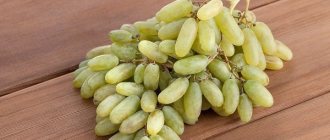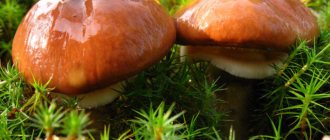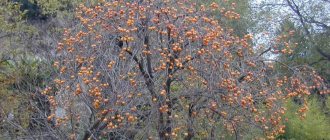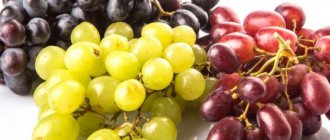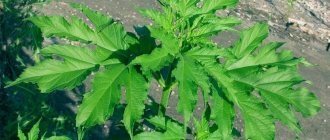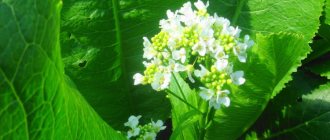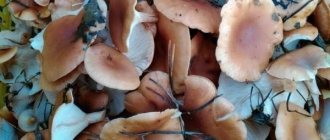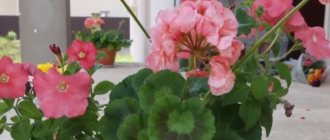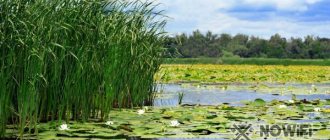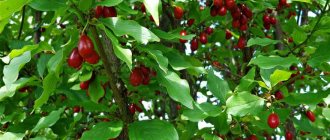Unabi, jujube - a small tree with thick bark from the Buckthorn family. May also be called Chinese date or jujube.
Planting and caring for the Chinese date unabi (jujube) has some peculiarities. For example, the growing season of jujube begins much later than that of most fruit crops. Therefore, inexperienced gardeners very often cut down viable trees, mistaking them for dead. You should not make such hasty conclusions, even if the tree is frozen, there is always a chance of root growth developing.
Short description
In Asia (China, India) and Southern Europe, where unabi grows naturally, it is the most common tree, growing up to 10 meters. In our conditions, the unabi date grows quite slowly, rarely reaching 4 meters. Unabi can take the form of a bush or tree.
Jujube is quite frost-resistant, according to most sources it can withstand down to -18 degrees, but it is better to cover the unabi for the winter, at least for the first few years. In China, they are working on developing varieties that are much more frost-resistant.
The Chinese date is characterized by simple elliptical leaves sitting on short petioles.
Unabi blooms with inconspicuous, small flowers. The flowers are small, white with a greenish tint. The flowering period of the Chinese date is in June.
Unabi is a monoecious plant, so there should be no problems with fruit set. Usually you need to wait 3-5 years for fruiting to begin, although flowers appear much earlier.
How to eat jujube
Chinese dates are usually consumed raw. This allows you to use the maximum beneficial properties of the product. It is eaten with the peel, after rinsing it with running water. In large supermarkets it can be found in the form of dried fruit. In stores in Eastern countries, Chinese unabi is offered as a seasoning.
What does jujube taste like?
Raw Chinese dates taste like a regular apple. A distinctive feature is the tart notes and dense structure. The Chinese product has the ability to quickly satisfy hunger. When dried, it is similar to dates.
For medicinal purposes, Chinese dates are consumed for 2-3 months.
Description of fruits
Jujube fruits are juicy drupes with tasty and nutritious pulp. Unabi dates are a storehouse of vitamins, minerals and many other substances. Fruits ripen most often in autumn (unevenly).
Unabi date fruits are usually oval or slightly elongated. Unripe dates are green in color, but when ripe they turn orange, red or brown depending on the variety. The fruits are colored unevenly, various patterns and spots may be created during ripening. The date looks interesting.
Chinese dates can be eaten when they are still green. It tastes tender and juicy, reminiscent of apples; depending on the variety, it can be sour, sweet and sour or sweet. Fully ripe jujube dates are much less juicy. If, after ripening, the fruit is left on the tree, or placed in a cool place at home, it becomes soft, dry and sweet. The taste then resembles a mixture of dry apple and pear. In the middle of the fruit there is one oblong bone.
Dried unabi dates taste like a cross between the taste of dried pear, apple, apricot, and dried plums.
Chinese date - a plant with medicinal fruits
Unabi is a large shrub or small tree up to eight meters high, with a sparse spreading crown and leaves that fall off in the winter. Wild plants have large, sharp spines on their branches; many cultivated large-fruited forms do not have these spines, which is their clear advantage over wild plants. The fruits of wild and cultivated forms of jujube differ mainly in size: from 5 grams for small-fruited wild specimens to 30–40 grams for the best large-fruited varieties. There is also some difference in the taste of the fruits, and many people prefer wild unabi. In terms of medical properties, the fruits of wild and cultivated forms of unabi are considered to be equivalent.
Unabi, or common jujube, is also known as jujube, jujuba, jujube, chilon, red date, Chinese date.
Chinese date on video
Unabi fruit is widely used in traditional Chinese medicine. In the middle of the last century, experiments were conducted in sanatoriums in Crimea that showed that regular consumption of fresh jujube fruits helps lower blood pressure. Since then, active cultivation of this oriental fruit crop began in Crimea and the southern regions of Ukraine and Russia with similar climates.
It should be noted that unabi fruits, like any other medicinal plant, are not at all a miraculous magic cure for all ills. For example, my neighbor in the country, who lived in Crimea for many years, is very skeptical about this miracle berry, because she personally has not been able to solve the problem of high blood pressure with the help of unabi over many years.
In the wild, unabi grows in Iran, Afghanistan, Central Asia and Western China. This part of Central Asia is characterized by an arid continental climate with very hot, long summers and short but relatively frosty winters. In its natural growth area, unabi has been cultivated since time immemorial, and many varieties have been created, some of which have begun to be grown in Europe and America. Good conditions for jujube culture are found in North Africa, Southern Europe, Western Asia, the arid regions of India, as well as in the dry subtropics of some US states, including Texas and California.
Due to the similarity of the dried fruit to dates, unabi is also called the Chinese date.
The traditional way of processing unabi fruits for long-term storage is drying. Dried unabi fruits are very similar in appearance to dates, hence the names “Chinese date” and “red date” - based on the color of some popular varieties.
Unabi begins its growing season very late, much later than most trees and shrubs. Because of this late awakening, many novice gardeners unknowingly uprooted completely viable plants, mistakenly deciding that the bushes had died over the winter.
On my site, the unabi bushes began to barely open their first leaves only in mid-May, a couple of weeks later than all other plants. Of course, against the background of the riot of spring greenery, such slow-witted people look very suspicious. If the bush is large, you can easily dispel doubts by cutting a branch and looking at the cut: dead wood becomes dry, black or brown. It’s better not to cut a small bush in vain, just wait until at least mid-June.
In any case, there is no need to rush to uproot: even if the above-ground part is frozen, there is hope for the appearance of root shoots.
Small yellow unabi flowers are very honey-bearing
Jujube blooms very late, only in June, after the complete end of possible frosts. Its small yellow flowers are very honey-bearing and attract many bees and other pollinating insects. To obtain good harvests, unabi needs cross-pollination, so you need to plant plants of several varieties or several different seedlings nearby. Self-pollination produces only a few fruits, most of which soon fall off long before ripening begins. Fully ripened fruits become soft, sweet and juicy, red or brown in color.
The moment of best taste of jujube fruits depends very much on the variety and on personal preferences: some people prefer those that are still dense, others prefer those that are overripe and have already begun to wilt a little.
When ripe, unabi fruits become red or brown in color.
In favorable conditions, jujube trees are very durable. There are known cases of abundant and regular fruiting of specimens that have reached a hundred years of age. Under normal weather conditions, good fruit harvests occur annually. Unabi is a fast-growing crop; with good care, the first flowers and fruits can appear within two to three years after planting the seedling. As the bushes grow, the yields increase. From a large mature tree in good conditions you can get up to 50 kilograms of fruit. They ripen late, usually in October; for the earliest varieties, at the end of September. The period of fruit ripening on each plant can last up to a month, as a result of an equally long extended flowering. The collected fruits are poorly stored fresh, even in the refrigerator for no more than a week, and do not withstand long-distance transportation. In addition to traditional drying, they are also suitable for home canning; they make excellent compotes, jams, and preserves.
Unabi fruit makes delicious jam
Cultivated species
Several types of jujube are grown to produce fruits.
| Title and photo | Latin | Motherland | Characteristics of sheet plates | Description of fruits |
| Ordinary | jujuba | Central Asian countries | Rounded, with a pointed apex | Oval shape, brown-red color |
| Lotus | lotus | Mediterranean | Round | Round shape, yellow |
| Mauritanian | Mauritiana | Northern Africa | Elongated, evergreen | Round, deep brown to yellow. |
All described types of unabi are very often called jujube, which creates some confusion.
Only one species is suitable for cultivation in Russia - the common jujube. The rest, due to low winter hardiness, are cultivated only in southern countries.
Jida and jojoba
The unabi tree is very often confused with jida and jojoba. To better understand what jujube is, let’s look at their differences in more detail.
| Jida | Hojoba | Jujube | |
| Leaves | Alternately spaced, narrow, silvery | Oval-shaped, silver-green, do not fall off in winter | Rich green, glossy, ovoid in shape with a pointed crown |
| Flowers | Yellow, bell-shaped | Yellow, dioecious | Yellow, wide opening |
| Fruit | Edible, brown-red, oval-shaped | Dry boxes, with cupped base | Edible, sweet, oval shaped. Red-brown color. |
Varieties
When growing unabi, varieties are selected taking into account the climatic characteristics of a particular region. For example, early ripening ones are better suited for the middle zone; for more southern regions, mid-ripening and late ripening ones can be used. When choosing jujube, varieties should also be classified by large-fruited size.
Descriptions of the most common varieties:
- Vakhshsky. An early ripening variety of unabi of Tajik selection. The fruits are cylindrical, chocolate-colored and ripen in early autumn. Valued for its high yields.
- Maury Jer. The trees are of medium height, the fruits are quite large, weighing up to 35 grams. They start singing at the end of September. Able to withstand short-term frosts down to -25° C.
- Candy. Low, spherical trees. The fruits are very small, sweet, juicy and abundantly cover the entire bush.
- Ta-Yan-Zao. Large-fruited Chinese variety of jujube. The trees are large and branchy. The first harvest is harvested 2-3 years after planting. Unabi dates are pear-shaped and yellowish-brown in color. The bone in them is completely absent or underdeveloped.
- Tavrika. A popular unabi variety that ripens in October. The berries are medium in size and look like miniature barrels. Valued for its increased frost resistance and excellent yield.
Procurement of raw materials
Jujube is used for medicinal purposes, the beneficial properties and contraindications of which were described above, or more precisely: the fruits and leaves. The bark and roots of this tree are rarely used for harvesting in personal plots. For such purposes, Chinese dates are grown on plantations.
The unabi leaf is harvested at the same time as the harvest. The fruits are processed, and the leaves are laid out to dry. A well-dried unabi leaf can be stored for about a year. Dry the leaves outside under a roof or in a room with low humidity and good ventilation.
Only large and ripe fruits, dark brown, sweet, without sourness, are suitable for harvesting dried fruits. The fruits are dried either in dryers or in the oven.
Dried jujube
Landing
To plant a jujube tree, you need to choose well-lit, sunny places with protection from direct northern winds. The date refuses to bear fruit even with slight shading, but it tolerates the most intense heat. At temperatures below +15°, unabi stops growing and flowering is delayed.
The Chinese jujube date does not tolerate waterlogged soils with close groundwater. Also, clayey, dense soils with an acidic reaction are absolutely unsuitable for it. Unabi plants grow well on rocky slopes and embankments, perfectly simulating its natural environment. Unaby grows quickly on sandy loam soil; soil with a neutral or slightly alkaline pH of 6.5-7 is best suited.
Planting of seedlings begins immediately after the snow melts. In more southern regions, jujube can be planted in the fall. Before as
After planting, unabi seedlings are soaked for a day in any growth stimulant. For example, you can use “Kornevin” or “Heteroauxin”.
Landing occurs as follows:
- A hole at least 50 cm wide is dug.
- A mound of humus is poured at the bottom of the pit.
- The root system of the seedling is evenly distributed over the mound.
- The hole is filled with earth.
Attention! The root collar of the seedling must be level with the soil surface.
After planting, the plant must be watered and secured with a small peg.
Vegetating seedlings with an intact root system can be planted throughout the warm period of the year.
Advantages of jujube for gardeners
Gardeners grow the Chinese date because of its high yield. Up to 300,000 flower buds are formed on an adult bush. Even with poor pollination, a three-year-old shrub produces up to 15 kg of berries. If you plant several bushes on a plot, the yield will increase many times due to cross-pollination. An adult jujube bears up to 50 kg of fruit.
The root system of the Chinese date extends deep into the soil up to 3 m, so the plant can survive without watering for a long time. The bush receives all the necessary moisture from the soil. Among the advantages of unabi are:
- high immunity to viral and fungal diseases;
- the ability to absorb nutrients even from poor soils;
- The jujuba bush produces a large amount of phytoncides.
Planting and growing jujube is no different from most garden plants. The main condition for the rooting and survival of a seedling is to choose a suitable place for this crop.
It is important to remember that although the jujube bush is unpretentious to the composition of the soil, the plant responds well to fertilizing. The seedling can be planted in sandy loamy fertile soil; the plant takes root well on crushed stone aerated soils.
Caring for jujube in the southern regions of Russia and Ukraine
In order for jujube plants to produce high yields, they must be cared for. For example, during periods of extreme heat and drought, they need to be watered. In the conditions of Crimea, the southern regions of Russia and Ukraine, one abundant monthly watering is quite enough. To do this, it is necessary to wet the soil to a depth of 60 cm or more.
Immediately after planting, unabi seedlings are watered weekly; this rule applies only in warm regions. In cooler climates, one watering every 2 weeks is sufficient. At first, unabi seedlings develop very slowly, so the soil around them must be weeded periodically. To reduce the number of weeds, the tree trunk circle can be additionally mulched.
In the spring, immediately after the snow melts, fertilizers are scattered on the soil surface under the trees:
- half a bucket of humus;
- 2 tablespoons of superphosphate;
- 1 tbsp potash fertilizer;
- 1-2 spoons of ammonium nitrate.
The amount of fertilizer is indicated per square meter of area.
Within 1-2 years after planting, the unabi will acclimatize and the growth will not be too large. From 3-4 years old jujube develops faster. From 2-3 years, small flowers may appear, but they will not set fruit (sometimes they set small ones, but quickly fall off).
Photo. three year old tree
Photo. Jujube fruits in November in the south of Ukraine
Unabi: chemical composition and calorie content
One hundred grams of the edible portion contains 79 kilocalories, 1.2 grams of protein, 20.23 g of carbohydrates (14.43% RDI).
With the exception of ascorbic acid, the vitamin and mineral balance is unremarkable. Crimean jujube cannot be called rich in vitamins and mineral salts. Its benefits lie in other compounds.
I put the data in a table, the numbers were taken from the official USDA website.
| Name | Amount per 100 g, mg | % Daily Value |
| A | 4 | 5 |
| B1 | 0,02 | 2 |
| B2 | 0,04 | 3 |
| Niacin | 0,9 | 6 |
| C | 69 | 83 |
| Potassium | 250 | 5 |
| Magnesium | 10 | 3 |
| Iron | 0,48 | 4 |
| Manganese | 0,08 | 4 |
| Phosphorus | 23 | 3 |
Fruits contain 1.7-3% organic acids (mainly malic, succinic, malonic, tartaric), flavonoids, triterpenes, saponins. They contain betulin, alkaloids, jujubosides, and betulinic acid.
Seeds contain:
- spinoside,
- juubogenin (jujuboside aglycone),
- jujuboside A,
- jujuboside B,
- sugars (glucose, rhamnose, xylose, sorbitol, arabinose).
Jujube is a valuable source of antioxidants. Among biologically active substances, experts note a large number of phenolic compounds (flavonoids). The skin is five times richer in them than the pulp.
Features of wintering
The Chinese date easily withstands a short drop in temperature to -25-28 °C. Therefore, it tolerates winter well in the subtropical conditions of Crimea and Transcaucasia. Summer there is quite hot and long, so date shoots have time to fully ripen. In more northern regions, its winter hardiness indicators are greatly reduced. In severe frosts, plants can freeze to the very foundation. If the root system remains intact, the plant is restored.
When growing jujube, caring for it involves creating winter shelters. To do this, in late autumn the plants are tilted and pinned to the ground. In winter, the unabi are covered with snow.
Advice! It is not recommended to cover unabi bushes with film or cloth. Due to increased humidity during thaws, they can dry out.
Crimean jujube beneficial properties and contraindications
Unabi is literally stuffed with ascorbic acid. Here there is an order of magnitude more of it than in apples, and one and a half times more than in oranges. At the same time, Crimean jujuba is not sour at all!
More vitamin C is produced if the crop ripens with insufficient watering.
Jujube contains betulin, a substance with high biological activity. It can be found in dietary supplements or obtained from birch bark. Betulin (according to the manufacturer's instructions for one of the supplements) has an impressive list of beneficial properties:
- protects against viruses and bacteria,
- lowers cholesterol levels,
- stimulates appetite,
- protects brain cells from adverse effects,
- helps the heart function,
- supports vascular health,
- stimulates digestion,
- removes toxins and heavy metal salts,
- improves liver function,
- normalizes lipid metabolism,
- reduces oxygen starvation,
- accelerates tissue regeneration,
- prevents the formation of gallstones.
In addition, the date is known for its choleretic, antimutagenic and antitumor effects.
Most publications on the healing powers of unabi are written in Chinese, and there are few reliable clinical studies involving patients. English-language authors agree that jujube has a calming, hepatoprotective, antioxidant and antitumor effect. In addition, it reduces inflammation, regulates blood glucose levels and strengthens the immune system.
Heals the gastrointestinal tract
Doctors from the National Chung Hsing University (Taiwan, China) performed a series of experiments on animals. They found that daily consumption of ziziphus aqueous extract has a beneficial effect on the intestinal mucosa and reduces the negative effects of toxic substances. The work was published in the journal Food Chem (February 2008).
Relaxes and calms
Traditionally, jujube is used as an antidepressant and natural stress reliever. Specialists from the Chinese Institute of Pharmaceutical Technology (Taiwan) conducted a series of experiments on rats and found that unabi seed extract calms, reduces motor activity, and increases sleep duration. The results were published in the October 2000 issue of the journal Ethnopharmacology.
Valuable source of ascorbic acid
A handful of unabi will completely cover the body’s daily need for ascorbic acid. This is a simple way to combat cell damage caused by free radicals.
Vitamin C reduces oxidative stress, protects against disease, maintains healthy skin and hair, and accelerates wound healing.
Has anti-cancer properties
Iranian scientists from the Institute for Vaccine and Serum Research (Mashhad) concluded that jujube can cause the death of certain types of tumor cells. More detailed research results can be found in the journal Citotechnology (February 2008 issue).
Features of cultivation in central Russia
Many gardeners would probably like to know how to grow unabi in central Russia. Very often, after several successful winterings, the plant unexpectedly dies. The reason for this most often lies in the cool summer. If there is a lack of heat, the shoots simply do not have time to ripen. Also, the cause of death can be too harsh a winter. It is simply not possible to grow jujube in open ground. He needs to create a shelter. For example, unabi can be planted in a greenhouse, one of the walls of which will be adjacent to the house.
What are the benefits of unabi for the body?
Unabi has a general strengthening effect on the body. It is very useful during periods of immunodeficiency and during recovery after a protracted illness. In addition, the fruit perfectly saturates, relieving the feeling of hunger for a long time. It can be used as a snack between meals.
Beneficial properties of unabi for men
Chinese dates are good for people of any age and gender. It is recommended for use by men facing reproductive disorders. The fruits contain many substances that have a stimulating effect on the functioning of the genital organs.
The vitamin composition is also preserved in dried Chinese dates.
The beneficial properties of the fruits of the unabi tree include the following:
- relief of the inflammatory process in the prostate;
- prevention of coronary heart disease;
- improving the quality of seminal fluid;
- elimination and prevention of erectile dysfunction;
- calming effect;
- strengthening blood vessels.
The benefits of unabi fruits for women
Women are recommended to include unabi in their diet for its anti-aging properties and support for reproductive health. The healthy fruit has a beneficial effect on the condition of hair, nails and skin. Thanks to B vitamins, the manifestations of premenstrual syndrome are reduced.
Is it possible to eat jujube during pregnancy?
Like any other fruit, jujube is extremely beneficial for women during pregnancy. It contains folic acid, which is necessary for the fetus in the first trimester. She is responsible for the formation of the baby's neural tube. Ascorbic acid has a strengthening effect on the immune system, reducing the risk of getting colds and flu. The minerals contained in unabi ensure the proper development of the musculoskeletal system.
Despite its beneficial properties, jujube can also be harmful. It is considered the strongest allergen. Therefore, it is advisable to discuss the possibility of its use with your doctor on an individual basis.
Comment! During pregnancy, Chinese dates help cope with constipation.
Can jujube be eaten by a nursing mother?
During lactation, adding jujube to the diet is not prohibited. But it is advisable to do this no earlier than three months after birth. The product is eaten in small portions, no more than one piece. If you are not allergic, you can increase the amount of fruit. If your baby's stool changes or skin rashes occur, you should discard the product.
At what age can jujube be eaten for children?
It is permissible to give unabi to children at the age of no earlier than two years. At this point, the baby’s body can fully digest solid food. Before introducing the product into the diet, it is advisable to make sure that there is no allergic reaction. At first, you need to give Chinese dates in crushed form and in very small quantities. Since unabi can stick to the teeth, you should give your child water after eating it.
Pruning methods for different climatic regions
When growing dates, a special care feature is periodic pruning. The type of pruning depends on the region:
- In the south, the bushes are given a cup-shaped shape. For this, 3-4 main skeletal branches are left. The main thing is that they are evenly distributed around the entire circumference of the bush. The central shoot is completely cut out. Subsequently, all shoots growing inside the bowl are removed.
- In the northern regions, the crown is simply thinned out evenly, avoiding excessive thickening.
How to prepare unabi date for winter
The frost resistance of unabi depends on the variety. In the first years of growth, all species need shelter. To do this, it is necessary to hill up the plantings and cover them with non-woven material.
It is almost impossible to cover older plants. In warm climates this is not a threat, but not in colder average annual temperatures.
For your information! Slight freezing of shoots often does not affect fruiting. It is enough to simply prune damaged shoots in the spring.
Reproduction
Reproduction of unabi is possible by seed and vegetative methods.
Seminal
Before growing unabi from a seed, you need to stock up on freshly picked fruits. Seeds from them are sown before winter. In the spring, after germination, the seedlings are thinned out. Seedlings are transplanted to a permanent place after 2 or 3 years of cultivation.
Overgrowth
The resulting shoots are also suitable for reproduction. In early spring or autumn, the required number of shoots are separated from the bushes and planted in a permanent place.
By layering
For propagation by layering, the lower shoots are pressed to the soil surface and secured with pins. The contact points are covered with soil and constantly moistened. By autumn, roots will form there. The following year, the formed bushes are carefully separated and planted.
Root cuttings
Planting material is harvested immediately after the snow melts from roots no more than 1 cm thick. The resulting cuttings are planted on seedling beds. After a year, full-fledged seedlings develop from them.
Graft
The grafting is used for breeding large-fruited varietal plants. To carry it out, certain skills and tools are required.
How to plant unabi in open ground correctly
The most crucial moment in growing and caring for unabi is planting. If done correctly, in a place suitable for the culture, there should be no problems.
When to plant: spring or autumn
Jujube is a southern crop, therefore, it should be planted only in the fall. The exception is container plants, which can be placed on the site in early spring. But not in summer! Zone 6 is not the Middle Zone! Even jujube moved into open ground from a container will suffer from the heat for the first season, despite its resistance to high temperatures.
Read to the end what those who advise spring planting write! “So that the plant has time to take root before the onset of severe frosts.” Sorry. What kind of “severe frosts” can there be in the sixth zone?!
And in the fifth, you can plant in September, and at the end of November cover the unabi for the winter. And “severe frosts” there usually begin no earlier than December. If during this time the jujube does not have time to take root enough to overwinter, it is unlikely that it will take root at all and will bear fruit normally.
Site selection and soil preparation
Choose a place for planting jujube that is as sunny as possible and protected from the wind. Any soil will do, as long as it is loose and well-drained. Dense soils are adjusted to meet the requirements of jujube by adding peat or sand. When soaking, be sure to provide drainage with a layer of at least 20 cm.
The pit for jujube is prepared in advance, preferably in the spring, but no later than 2 weeks before planting. Its size depends on the age of the unabi, and should be 1.5-2 times the volume of the root. After the hole is dug and drainage is laid, it is filled 70% with substrate and filled with water.
How to plant unabi correctly
To plant jujube, choose a cloudy, cool day. It is produced in the following sequence:
- A depression is made in the center of the planting hole, the volume corresponding to the jujube root.
- If the unabi is taller than 60-70 cm, drive in a strong peg for a garter.
- Place the jujube in the hole, cover the root, constantly squeezing the ground. This will prevent the formation of voids that prevent rooting.
- Water the unabi abundantly and mulch the tree trunk circle.
Two points in planting jujube should be considered separately:
- Usually, when planting crops, the position of the root collar is clearly specified. The distance by which it should rise above the surface of the earth or, conversely, be buried is indicated. For jujube this is not critical. Even for plants grafted in the root collar area. Some gardening practitioners generally advise deepening the grafting site by about 15 cm, especially in cool areas. So, when jujube freezes in the spring, not just shoots of the specific rootstock will grow from the root. From the lower part of the varietal scion, a shoot of cultivated unabi will emerge.
- Planting jujube with bare root. Some inexperienced gardeners may be dissatisfied with the description of the process. Where is the mound around which the unabi roots spread out when planting? What would it be like without him? Jujube has a well-developed tap root, under which you need to dig an additional hole. Instead of thinking about how it can be straightened around the “mound”. If a gardener was sold jujube with a fibrous root, then he was deceived - the plant was not grafted, but grown from a cutting. It does not have the resistance to adverse factors and the durability of seed grown or grafted unabi. It’s one thing for a gardener to propagate jujube himself; another thing is to buy it from a nursery or garden center. Such plants should not go on sale!
Pests and diseases
In some years, unabi may be damaged by pests and diseases. Of the insects, jujube is most often affected by the codling moth and aphid. The fight against them comes down to the use of insecticides. Of the diseases, the date is most susceptible to spotting, and unabi berries can also be damaged by fruit rot, which is most severe in rainy years.
Jujube, grown in the southern regions, is an unpretentious and undemanding crop. When cultivating in central Russia, you will have to tinker with the plant. To achieve positive results, it will have to be constantly covered.
Photo. Harvest variety Wuxing Hong
Variety Candy
Harvesting
Many jujube varieties bloom the following spring after planting. Species plants grown from seeds bear their first harvest in the 3rd or 4th season. One adult bush or tree produces approximately 30 kg of fruit, and record holders produce up to 80 kg per year.
Since the flowering of jujube is spread over several months, the harvest ripens unevenly. In the fifth zone, late varieties may not reach full ripeness before the onset of frost.
Unripe unabi, which has an apple taste, is consumed fresh and processed. Collect by hand when the surface of the skin becomes brown by a third.
Fully ripened jujube becomes soft, mealy inside, like a date, and very sweet. It can wither directly on the branches and hang on the tree until frost - this is how the fruits gain sweetness. In hot, dry summers, unabi ripens faster.
Harvesting ripe jujube can be done at one time. To do this, use special combs with teeth spaced every 1 cm. The fruits are “combed” onto the film, and then manually freed from leaves and twigs.
If prolonged rains begin in the fall, the jujube must be harvested completely, regardless of the degree of ripeness, so as not to lose the harvest. The fruits will arrive indoors, laid out in one layer.
Unripe jujube is not dried, and the seeds collected from it have poor germination.
